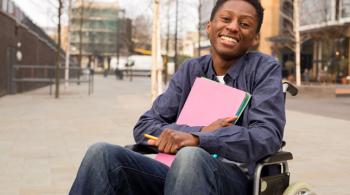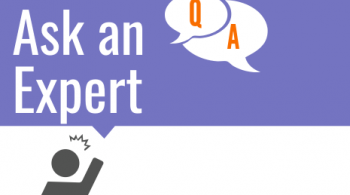By Natalie Shaheen
January 10, 2017
Natalie is an educational consultant whose work focuses on science, technology, engineering, and math (STEM) instruction for students with disabilities, particularly blind students. Follow Natalie on Twitter at @nlshaheen.
Blindness is a much more complex concept than colloquial definitions would have us believe. In her faculty interview, Dr. Marina Bedny points out that “the brain is not in the eyeballs,” meaning our knowledge and understanding of the world is comprised of much more than what we are able to see. It is not imperative that students see in order to learn. Gaining a better understanding of blindness and the needs of Blind students is important for student outcomes.
Looking for more detailed information about how to support and include blind students? Check out the resources below.
The Basics:
These easy to digest articles provide useful foundational knowledge about teaching, learning, and blindness.
- Designing Inclusive Learning Environments: What do Blind Students Need? This blog post provides a brief description of how teachers can ensure the built, digital and cultural aspects of their classroom environment are welcoming to blind students.
- Accommodating Blind Learners Helps All Learners: This article in the Journal of Museum Education documents lessons learned by educators about how to make museum learning activities accessible to blind students. The ideas shared are applicable in both formal and informal education contexts.
- For Teachers: Basic Tips for When You Have a Visually Impaired Student in Your Class This article is a great introduction to some simple changes that can enhance learning.
- Braille: Deciphering the Code: Learn a little Braille!
An Alternative View of Blindness:
The first post in this series on blindness alluded to an alternative conception of blindness, one held by many blind people and the sighted people in their lives. These stories will provide a window into this more positive conception of blindness.
- What Does She See: In this forthright and witty article, a sighted father shares his approach to ensuring his blind daughter and the people around her develop a positive conception of blindness.
- Why do we Fear the Blind?: In this New York Times opinion piece, a teacher of the blind (who happens to be sighted) explains that like most people, he once feared blindness, but from his blind friends and students he has learned that blindness is not scary or tragic—it is just a different and equally fulfilling way of living.
Academics:
In a previous blog post, the Linking Research to Classrooms Blog recommended that teachers not reinvent the wheel or struggle to solve a problem alone. The resources below provide information about some of the tools and techniques that teachers, blind students, parents, and blind professionals have already developed for various academic subjects.
- Future Reflections Special Issue on Science, Technology, Engineering, and Math (STEM): This issue of Future Reflections, a free magazine for parents and teachers of blind children published by the National Federation of the Blind, focuses on how blind students can participate fully in STEM subjects.
- National Center for Blind Youth in Science Resources: An index of tools, techniques, and articles pertaining to all areas of STEM.
- Infusion of Print Literacy Methodology into Braille Instruction: This article in the Journal of Blindness Innovation and Research (an open access journal) discusses how teachers who have expertise in reading instruction and interventions can bolster efforts to teach Braille literacy to blind students.
- Braille Book Resources: A list of Braille book vendors, libraries, and free book programs.
- Sensational Art: On this blog, Ann Cunningham, a tactile artist and art teacher at the Colorado Center for the Blind, provides ideas about making the production and consumption of art accessible to blind students.
- American Printing House for the Blind (APH): APH sells educational tools and materials that are specifically adapted for blind students. If you need a Braille copy of the periodic table, a tactile map of the world, or some other common educational resource, APH is a good place to look. School districts can often purchase materials from APH using “quota funds”, federal dollars specifically designated for purchasing specialized materials for blind students.
Though blindness is a low-incidence disability, especially in children in the US, resources and best practices do exist. If you can’t find the resources or best practice that you are looking for, reach out to the National Federation of the Blind, tweet with teachers of the blind on Twitter, or talk with teachers of the blind in your district or state.















